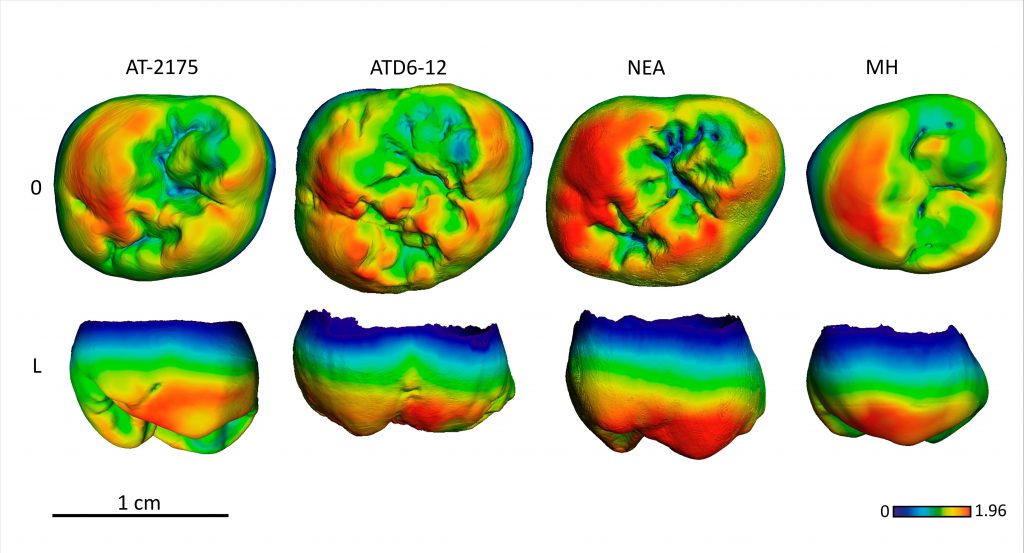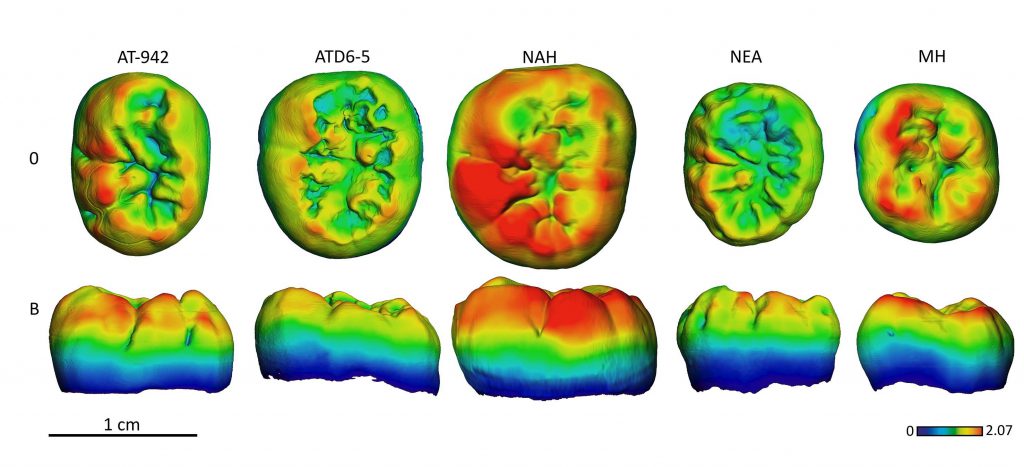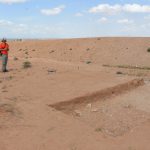The molars from Sima de los Huesos site share dental tissue traits with Homo antecessor and Neanderthals

The Dental Anthropology Group of the Centro Nacional de Investigación sobre la Evolución Humana (CENIEH) has published a paper this week in the journal PLOS ONE which marks another step forward in characterizing the individuals from the Sima de los Huesos site (Atapuerca, Burgos, Spain) and their relationship with Neanderthals and Homo antecessor, and helps to clarify the evolutionary steps that led to the dentition characteristic of Late Pleistocene hominins.
In this paper, whose lead author is the researcher Laura Martín-Francés (CENIEH and PACEA-University of Bordeaux), the dental tissues in the molars of the European Middle Pleistocene individuals found at Sima de los Huesos are analyzed, and compared with species in the fossil record and modern humans.
To conduct this comparative study, micro-computed tomography (mCT) and high-resolution images were used to examine the internal structure of 72 upper and lower molars from this site at Atapuerca, and these were contrasted against another 500 molars belonging to species from the genus Homo, extinct and extant, from Africa, Asia and Europe.
In the entire fossil record analyzed, only the Neanderthals present a unique structural pattern in molar tissues (enamel thickness, percentage of tissues and their distribution in the crown) which, in addition, they do not share with any other species. “In comparison with that record and with modern humans, Neanderthals had thin enamel, with a higher proportion of dentine and a more disperse distribution pattern”, says Martín-Francés.
It has been possible to determine that the molars from the Sima de los Huesos individuals had thick enamel and that, therefore, they do not share this trait with Neanderthals. Nevertheless, the two groups do share the same tissue distribution pattern.
“The results suggest that even though the complex of typically Neanderthal traits appeared later, certain aspects of the Neanderthal molar structure were already present in the hominins from Sima de los Huesos. In earlier work, we had identified this same pattern in Homo antecessor, another of the species recovered at Atapuerca”, adds Martín-Francés.
The Sima de los Huesos population, related genetically to the Neanderthals, represents a unique opportunity to study the appearance of the “typical” structural pattern of Neanderthal molar tissue.



